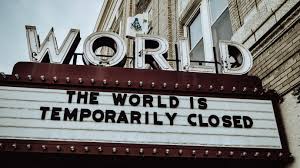I don’t think there has been an event that made a drastic change in more people’s lives than COVID-19. Also known as CoronaVirus, a world wide virus that impacted everyone’s daily lives and made the whole world stop. In the first moments of this virus, people were still discovering and learning about what it was and what the effects were. The real problem was in March 2020, when the whole world completely shut down.
COVID-19 started spreading rapidly, affecting everything in its path. From the birth to the present of this virus, it has caused over 7 million deaths across the globe. There were many different levels within the virus, adults and elderly people had a larger chance of experiencing the deadly symptoms. This started to worry doctors and hospitals, as they began to fill up everyday with patients. The biggest problem COVID brought to the population was that it was highly contagious, meaning that if one person in school or work had the virus, it would spread to everyone in their surroundings.
Apart from the problems I’ve listed above, this pandemic also introduced us to confinement or lockdown. It was a time that everyone dreaded and never wanted to go back to. Schools, stores, gyms, restaurants and companies were forced to shut down temporarily or permanently because they weren’t receiving the customers they had before the pandemic.The only places open were pharmacies, hospitals, and maybe some stores that had necessities.
Many called this pandemic “an epidemic of loneliness” because no one could leave their house or go out of a 15km radius (this happened in Australia). Police would patrol the streets, making sure no one was where they weren’t supposed to be. The only way it was possible to leave was if someone had a form signed by the doctors allowing them to go out and visit someplace. The pandemic not only caused a physical disease, but caused many and people worldwide to struggle with their mental health. This was due to the fact they were separated from their families, and also because people used their phones more and started comparing themselves or feeling more alone.
The University of Alabama in Birmingham wrote in their article, “Health care heroes. And health care burnout,” that during early stages of COVID, health care doctors were able to take care of patients as they had during the past. But as Alicia Rohan wrote in her article, “two years is a long time, even for heroes. Eventually, signs of burnout appeared.” The population began to complain that their doctors weren’t doing enough to keep people safe from the virus, when the reality was that doctors had been working so consistently and trying their hardest to do their job that they eventually started losing stamina. COVID-19 started becoming everyone’s greatest nightmare.
Today, COVID-19 isn’t as worrying as it was, everyone has gone back to their usual life. Or so we think. According to The University of Colorado, there has been a change in numbers for activities in the population. For example, in the United States, 59% spend more time at home than before the pandemic, 41% go to the grocery less often and 75% eat out less often. These percentages explain that even though we are much safer from the epidemic than we were a few years ago, our lives have never been the same ever since.
Bibliography:
Works Cited
“COVID – Coronavirus Statistics.” Worldometer, https://www.worldometers.info/coronavirus/. Accessed 7 March 2025.
DiConsiglio, John. “When COVID Changed the World.” gwtoday, 14 March 2024, https://gwtoday.gwu.edu/when-covid-changed-world. Accessed 20 February 2025.
Figuerado, Paul, and Bill Snead. “Three Years Later: How the Pandemic Changed Us | Duke Today.” Duke Today, 8 March 2023, https://today.duke.edu/2023/03/three-years-later-how-pandemic-changed-us. Accessed 7 March 2025.
Marshall, Lisa. “’An epidemic of loneliness’: How the pandemic changed life for aging adults.” University of Colorado Boulder, 9 April 2024, https://www.colorado.edu/today/2024/04/09/epidemic-loneliness-how-pandemic-changed-life-aging-adults. Accessed 7 March 2025.
Rohan, Alicia. “How the COVID-19 pandemic changed society – UAB News.” University of Alabama at Birmingham, 14 March 2022, https://www.uab.edu/news/news-you-can-use/how-the-covid-19-pandemic-changed-society. Accessed 7 March 2025.

